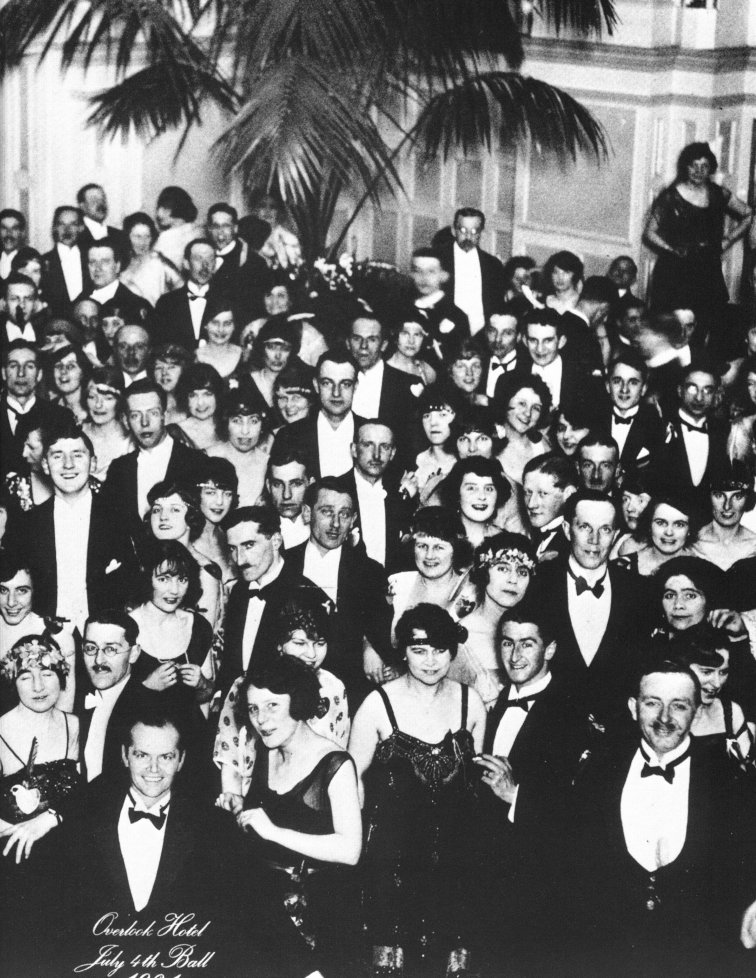Wolfmans_BrothEr
Bluelighter
- Joined
- Apr 23, 2011
- Messages
- 904
Ok I searched with no results and I'm kinda surprised this hasn't been asked already
Anyway if uve seen the shining then you'll know what I'm talking about, and if u haven't then u haven't lived
i wrote this referencing the picture right before the credits placing Nicholson in what's supposedly the Overlook hotel dated July 4th 1921, something like 30 or 40 years earlier than when the movie takes place, with Nicholson not aging a day.
I don't really know what to make of the ending, which is why I started this thread. From my first interpretation, I think jack had some sort of draw to this hotel. The hotel spoke to him (making him go insane) just like it spoke to Danny. If u remember when Danny and the chef are talking, and the chef says "not everyone who can shine is aware of their ability" or something along those lines. Jack was able to shine, he just didn't know it or accept it. And him getting the job is his connection/draw to the hotel. When I see the picture at the end, I feel like he's been reincarnated from someone who was previously/always there (when the guy in the bathroom says "uve always been the caretaker") which is part of his connection or attraction to the hotel.
From reading different analysi, I don't know what to think. One person went as far as to say that the picture wasn't even taken IN the overlook, and that the picture is from a new years eve party, not a 4th of July. He referenced a palm tree in the back, someone holding a noisemaker, (which was supposedly photoshopped into the picture on purpose) and the music playing as we see the final picture.
I've also heard a few people say the entire movie is a mirror of the novel. For example the color of the snowcats were opposite than in the novel, redrum becoming murder, and cud even explain the photo being dated mid summer but actually being from mid-winter, amongst other things
Another thing I've read was that the hotel had teleporting properties which can be identified throughout the film. The author felt certain hallways or rooms brought the characters to different parts of the hotel in a matter of seconds. But I kinda stopped reading when he started talking about Kubrick referencing Mayan symbols
I don't fully doubt any theory I've read since Kubrick paid such attention to detail and none of these would really surprise me
and if anyone wants to take a swing at the meaning of two guys going down on eachother in furry suits be more than welcome
Anyway if uve seen the shining then you'll know what I'm talking about, and if u haven't then u haven't lived
i wrote this referencing the picture right before the credits placing Nicholson in what's supposedly the Overlook hotel dated July 4th 1921, something like 30 or 40 years earlier than when the movie takes place, with Nicholson not aging a day.
I don't really know what to make of the ending, which is why I started this thread. From my first interpretation, I think jack had some sort of draw to this hotel. The hotel spoke to him (making him go insane) just like it spoke to Danny. If u remember when Danny and the chef are talking, and the chef says "not everyone who can shine is aware of their ability" or something along those lines. Jack was able to shine, he just didn't know it or accept it. And him getting the job is his connection/draw to the hotel. When I see the picture at the end, I feel like he's been reincarnated from someone who was previously/always there (when the guy in the bathroom says "uve always been the caretaker") which is part of his connection or attraction to the hotel.
From reading different analysi, I don't know what to think. One person went as far as to say that the picture wasn't even taken IN the overlook, and that the picture is from a new years eve party, not a 4th of July. He referenced a palm tree in the back, someone holding a noisemaker, (which was supposedly photoshopped into the picture on purpose) and the music playing as we see the final picture.
I've also heard a few people say the entire movie is a mirror of the novel. For example the color of the snowcats were opposite than in the novel, redrum becoming murder, and cud even explain the photo being dated mid summer but actually being from mid-winter, amongst other things
Another thing I've read was that the hotel had teleporting properties which can be identified throughout the film. The author felt certain hallways or rooms brought the characters to different parts of the hotel in a matter of seconds. But I kinda stopped reading when he started talking about Kubrick referencing Mayan symbols
I don't fully doubt any theory I've read since Kubrick paid such attention to detail and none of these would really surprise me
and if anyone wants to take a swing at the meaning of two guys going down on eachother in furry suits be more than welcome
Last edited:


